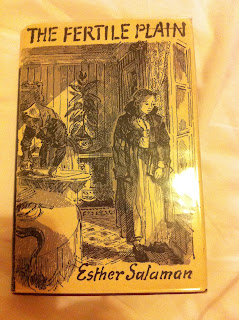In pursuit of Esther
What precisely am I researching in Cambridge? In short, researching female academics who were born too soon to achieve recognition.
I am focused for now on the Salaman women who were extraordinary Jewish intellectuals in their age.It's an ethnographic study: these women were linked by their science and religion. The women included a Hebrew scholar and theologian, an anthropologist, a musician who developed a theory for teaching Bel Canto methods, writers, artists, academics, and my current favourite, Esther, who gave up physics to study memory, starting with her own.
Esther Polianowski wrote the little book on the right, and along with her small literary efforts she is mostly forgotten. A close reading of her books yields treasures. She was an ethnographer before the word came into vogue. Esther's own story is hidden in her fiction. She fled across Russia as the revolution swept away Jews in waves of pogroms. Five of her friends were murdered on the trek to Palestine, and once she got there, she turned around to go back to the Ukraine to bring her mother out.
Her "important" work was in keeping notes of her conversations with Einstein when she was his student briefly in Germany. I started my research into Esther when I found this journal (below) on the internet. Here she writes under her married name, Esther Salaman. If you fail to slip the Poianowski in the middle of her name she is easily confused with her sister in law, Esther Salaman the operatic singer.

The profound influence of early Zionism on all of the Salaman women explains some of their single-minded academic interests in an age where middle class women did not raise a bead of sweat. Most of the Salaman family were living off the fortune made in ostrich feathers by their Pater. Even the men did not need to work, but they took on great tasks, often philanthropic, always political.
The women formed friendships with both women and men who were leaders in their fields.
The R.N. Salaman archive is housed at Cambridge. I will probably also have a look at Brenda Salaman's archives housed at the London School of Economics.

Is the Fertile Plain still in print?
ReplyDeleteShe isn't entirely forgotten. Her name and some of her story about Einstein is featured in Denis Brian's bio of Einstein. And it's because she wrote about these memories that he found her articles (Listener Sep 8 1955). Of course Einstein's attitude was sexist for us today (he believed women were not creative). What an amazing life she lived. She like Emmy Noether and others are like pioneers for women today who definitely have the creativity to contribute.
ReplyDeleteI'd love to read more about the Salaman women. Thanks.